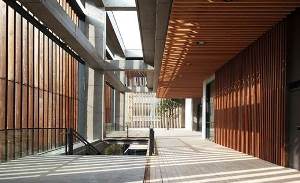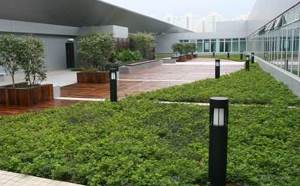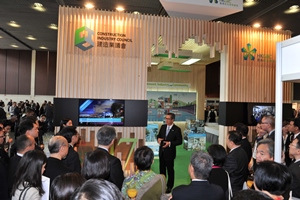Attending the World Sustainable Building 2014 Conference in Barcelona
|
At the end of last month, I led a Hong Kong delegation comprising more than 100 members to attend the World Sustainable Building 2014 Conference in Barcelona, Spain. We discussed and shared experience with representatives and experts from the governments and international institutions of different countries on the latest developments and challenges in sustainable building. I also officiated at the opening ceremony of the Hong Kong exhibition booth. We took the opportunity to introduce the two global green building events to be held in Hong Kong in 2015 and 2017. This will be the first time for the theme of the world conference in 2017 to be upgraded from “Sustainable Building” to “Sustainable Built Environment”. I invited all those present to keep in touch with us and share their experience on this issue of worldwide concern. Comparing the development of sustainable building in different countries, I found Hong Kong’s performance very promising. During the trip, I gained a deeper understanding of the difficulties that Hong Kong has faced in the development of sustainable building in the past. In the inception stage, the concept of green building was mainly promoted by engineering professionals through providing energy-efficient building services such as energy-saving escalators and energy-saving fluorescent tubes, adopting environmentally friendly construction materials, and using recyclable materials and minimising construction waste during construction. All of these initiatives contributed to the rapid development of green buildings at the early stage. However, after years of hard work, the development of traditional green building reached a bottleneck in mid-2000 with limited room for further improvement. At that critical moment, the architectural professionals began to advocate passive design, a concept that takes into account factors such as the orientation of buildings, the microclimate in the environment and maximising the use of natural elements in the design of buildings. For example, passive design makes use of sunlight for lighting and natural wind for lowering and improving the indoor temperature and air quality respectively. This reduces or even avoids lighting and adjustment of indoor temperature by mechanical means, thus enhancing the energy efficiency of buildings and upgrading green buildings to sustainable buildings. Thanks to the efforts of multi-disciplinary professionals in Hong Kong in recent years, the development of sustainable building has become diversified: from emphasis on the design of buildings to introducing consideration of maintenance, management and property relocation, with the focus shifted from a single building to clusters of sustainable buildings. Also, the consideration in planning has been extended from local areas to district level to amplify the effectiveness in further reducing greenhouse gas emissions and enhancing people’s health and quality of life. “Sustainable Building” has indeed entered into the new era of “Sustainable Built Environment”. Not only buildings, but also the environment as well as roads and public areas within the district should be considered as a whole in the planning. We have also followed this global trend in the planning of Energizing Kowloon East and the West Kowloon Cultural District etc. This trip also gave me a deeper understanding of the importance and difficulties of promoting sustainable building in existing buildings. Drawing on experiences of different countries, we see the need to set up benchmarks and develop evaluation tools on existing buildings. Currently, there are more than 40 000 buildings in Hong Kong. Before formulating and implementing any policy initiatives, we have to look at the conditions of existing buildings and collect data to analyse their current performance in such aspects as energy efficiency and greenhouse gas emissions, so as to find out the most appropriate solution. The Buildings Energy Efficiency Ordinance came into full operation in 2012, requiring that energy audits be carried out on commercial buildings every 10 years. The data collected in the auditing process can also help us set up benchmarks for reference in future. It is worth mentioning that all those present at the conference recognised the need to promote to the public the importance of sustainable building in addressing global warming and improving the living environment. If each and every one of us can understand and support this campaign, it will be much easier for us to achieve our goal. Concluding the experience in this trip, I believe that to build Hong Kong into a comfortable city with quality living and sustainable development, the Government, the construction industry and the community should join forces and meet the challenges head on. Let us work together to create a better living environment for all. |
|
9 November, 2014
Back

